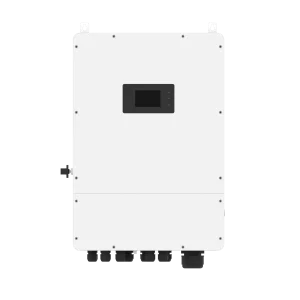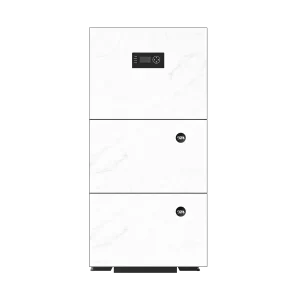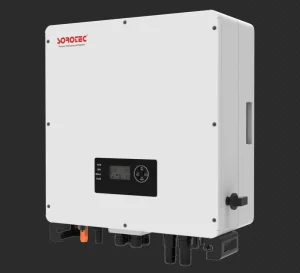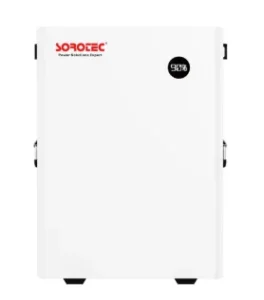Modular inverters stand out in high-density setups thanks to their clever multi-module setup, easy swap-out repairs, and smart way of balancing power loads. They bring top-notch dependability, room to grow, and better energy savings—perfect for business, factory, or large-scale utility needs where avoiding breakdowns and having wiggle room to expand are must-haves.
The Shift Toward Modular Inverter Architecture
As energy setups get trickier and the need for flexible, high-performing options spikes, modular inverter designs have become the go-to choice for many uses. Unlike old-school, bulky systems, these inverters give you a bendable, error-proof framework. This lets you shape power systems to fit exactly what you need.
Meeting the Demands of High-Density Environments
In packed spaces like office towers or massive solar farms for utilities, power gear has to be small yet strong. Modular inverters tackle this challenge head-on by splitting the workload across several units. If one part quits, the others keep chugging along. That’s a game-changer for places where every second of uptime matters.
Take the On & Grid MPGS Series 50-600KW from SOROTEC, for instance. It works for both grid-tied and off-grid setups, flipping between modes in under 10ms. Plus, it handles peak and valley charging like a pro while keeping things running smoothly with its built-in UPS feature.
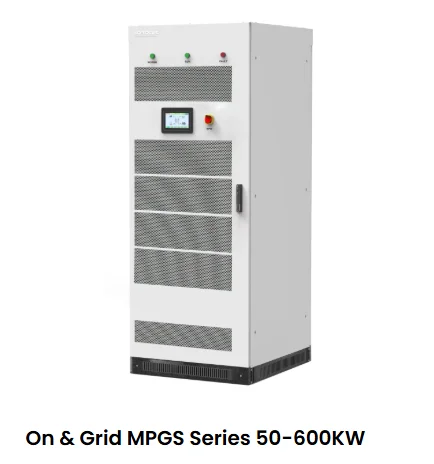
Scalability and Redundancy in Modular Systems
Modular setups let you boost your power system bit by bit. Instead of shelling out for a huge inverter right away, you can tack on extra units as your needs grow. This cuts down on upfront costs and matches your capacity closer to what you actually use.
Single phase output up to 36KW using 6 units Three phase output using either 3 units(18kw)or max 6 units(36kw)—that kind of growth potential is baked right into modular inverter designs. On top of that, backup is part of the deal. If one unit flops, the others jump in right away, keeping everything steady.
Efficiency Gains Through Modular Design
Being efficient isn’t just about how much power you convert. It’s also about how well your system adjusts to different demands and outside conditions.
Optimized Load Distribution and Thermal Management
In modular systems, the workload gets spread out smartly across all working units. This cuts down on heat buildup in any single part, which means those pieces last longer and work more reliably. Units can even shut off or slow down when they’re not needed, saving power that would otherwise go to waste.
Cool features like the MPPT Solar Inverter with UPS Function make sure each unit runs at its best, even when the sun’s not cooperating. Honestly, it’s pretty neat to see how these systems adapt on the fly.
Reduced Downtime with Hot-Swappable Modules
One huge perk of modular designs is how you can swap out broken parts without turning off the whole system. This slashes the time it takes to fix things, which is a big deal in factories or plants where every minute offline costs money.
Enhancing System Flexibility and Integration
Being able to shift gears fast as energy needs change is super important in today’s power networks. Modular inverters are great at this because they’re easy to plug in and work with all sorts of setups.
Adaptability to Diverse Energy Scenarios
Whether you’re running a mixed microgrid or adding green energy to an older system, modular inverters give you tons of options. You can set them to use power for yourself during the day, switch to battery at night, or send extra juice back to the grid when conditions line up.
The iHESS Series is a prime example. It offers four modes—Self Use, Time of Use, Backup Power, and Grid Priority. That makes it a solid pick for homes or businesses alike.
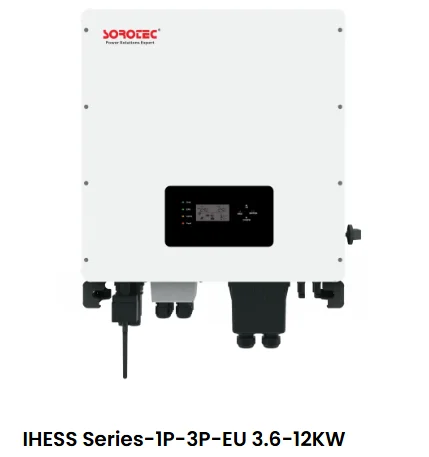
Compatibility with Hybrid and Grid-Tied Systems
Today’s power setups often mix solar panels, batteries, generators, and grid hookups. Modular inverters fit right in with these mixed systems. They connect smoothly with Battery Management Systems (BMS) and Energy Management Systems (EMS), making sure everything runs at its best.
Reserved communication port(RS485,CAN)for BMS Interface Global cloud platform mobile APP anytime and anywhere open APP,support power internet applications—stuff like this is key for keeping an eye on things and staying in control in real time.
Improving System Reliability and Maintenance
Dependability isn’t just about tough hardware. It’s also about spotting problems fast and fixing them without messing up the whole operation.
Simplified Troubleshooting and Replacement
Modular designs make it easier to figure out what’s wrong by narrowing issues down to one unit. If a piece isn’t pulling its weight or just stops, smart monitoring tools can point it out without dragging down the rest of the system.
With a simple LCD screen, the controller shows live updates on how things are running. This helps you make quick calls when it’s time for upkeep.
Lower Mean Time to Repair (MTTR) in Critical Installations
Being able to swap units on the go, paired with sharp diagnostic tools, cuts down repair time a lot. That’s huge in places like hospitals or remote telecom towers where being offline isn’t an option. Frankly, this alone can make modular setups worth picking over the old-fashioned kind.
Application-Specific Advantages of Modular Inverters
Not every power system is the same, and their needs vary a ton. Modular designs really shine when they’re tweaked for specific jobs.
Commercial and Industrial Energy Systems
For businesses dealing with changing power needs all day—like running air conditioning or factory machines—modular systems respond fast without overloading you with extra capacity you don’t need yet.
Take the iHESS Series, for example. It helps companies handle high-demand times while saving cash by charging batteries when rates are low and using that power when prices spike.
Utility-Scale Solar Installations
At big utility levels, where every bit of power ties straight to your bottom line, modular systems make upkeep easier without shutting down huge chunks for repairs. They also let you grow the setup step by step as new areas or funds come into play.
Leveraging Advanced Features for Smarter Energy Control
Modern energy setups need smarts, not just raw strength. Today’s modular systems bring exactly that to the table.
Intelligent Monitoring and Remote Management Capabilities
Checking in from afar isn’t just handy—it’s a must when your gear is spread out over wide areas. With web tools and mobile apps showing live stats like voltage or solar output, you can make smart moves from anywhere, anytime.
Stay on top of things no matter where you are with our monitoring app and website.
Support for Peak Shaving and Load Shifting Strategies
With power bills climbing during busy hours worldwide, shifting loads isn’t just a neat trick—it saves real money. Modular systems with clever EMS tools can flip between battery and grid power based on set limits, keeping things steady while cutting costs.
Recommended Solutions for High-Density Power Applications
If you’re hunting for strong options built for tight spaces or critical spots, here are a couple to check out:
The iHESS Series comes with fast backup (under 10ms), remote tracking through app or web, and multiple modes like Time-of-Use planning—all in an easy-to-use design.
For bigger industrial or utility projects needing solid MPPT handling up to 900VDC and UPS switching in 10ms, take a look at the On & Grid MPGS Series (50–600kW).
Intelligent Charging Control with MPPT Technology
Maximum Power Point Tracking (MPPT) boosts solar panel output by tweaking voltage and current on the fly, no matter the weather or shade. This keeps your panels pumping out max power all the time.
The MPPT SSC Series hits a tracking accuracy of 99% with cutting-edge tech that gets circuit efficiency up to 97%. It also has auto voltage sensing (12V/24V/48V), protection against reverse connections, and temperature adjustments—all shown on a clear LCD screen, great for home rooftops or bigger business setups.
About SOROTEC: Empowering Smarter Solar Infrastructure
When you’re building tough solar systems that mix power with brains, you need more than just parts—you need a clear plan backed by great engineering. That’s where SOROTEC steps up. Based in Shenzhen for R&D and Dongguan for production, they focus on crafting solar products for today’s tough markets. From small home setups to giant industrial projects, they’ve got flexible solutions with smart tracking tools, super-fast UPS switches, hybrid-ready builds, and full EMS/BMS support—all made with strict quality in mind.
FAQ
Q1: What makes modular inverters more efficient than traditional ones?
A: Modular inverters spread out the workload across separate units and allow quick swap-outs for repairs. This keeps downtime low while still delivering solid performance and room to grow.
Q2: Can I use modular inverter systems without connecting batteries?
A: Yes—systems such as REVO HM series operate efficiently even \Without battery connected To load Solar power input Utility power input\, so they’re a good fit for mixed setups where batteries might come later or not at all.
Q3: How does MPPT improve solar panel efficiency?
A: MPPT tech adjusts to sunlight changes in real time, hitting a tracking accuracy of up to 99%. This makes sure you get the most energy possible from your solar array.


